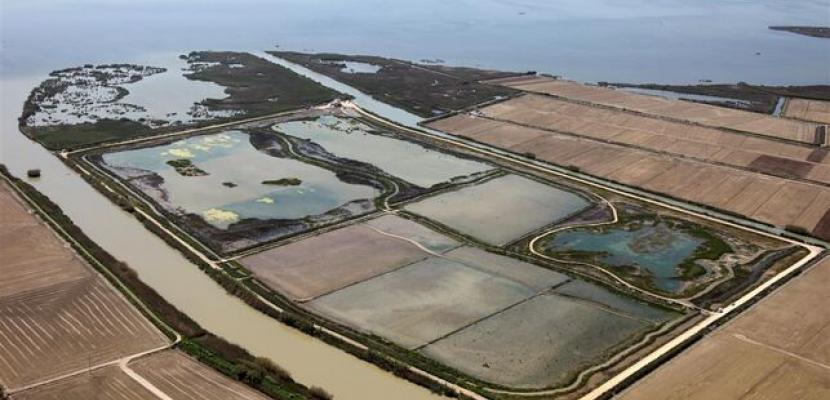Image

Tancat de la Pipa
Published on 29 May 2019

Spain
Comunitat Valenciana
This is the good practice's implementation level. It can be national, regional or local.
About this good practice
L'Albufera Natural Park is one of the most important wetlands in the Iberian Peninsula, but despite its size (21,120 Ha); only 17% is publicly owned. In addition, the representation of natural marsh habitats in the park is very scarce and is where most of the natural values are concentrated.
Due to this need, some agricultural lands were expropriated with the idea of carrying out a project for the restitution and adaptation of natural watercourses. The purpose of this action was the environmental recovery of some marsh and riverside habitats of L'Albufera, for which it was necessary to isolate the expropriated area also allowing an independent management of the rest of the adjacent cultivation areas.
In this way, what until 2006 were rice fields, has been transformed into a reserve area within the Park with a variety of characteristic habitats.
This area is currently owned by the Confederación Hidrográfica del Júcar (Government of Spain) but it is managed by the Sociedad Española de Ornitología SEO/BirdLife y Acció Ecologista-Agró (being NGO's) through a land custody agreement. In addition, there are new ways of accrediting boatmen (boat trips) that are being set up by Valencia City Council next to this space (SEO/BirdLife and Acció Ecologista-Agró). They include training, voluntary work, environmental education, visits, ornithological tourism and act as an interpretation centre for the Park.
Due to this need, some agricultural lands were expropriated with the idea of carrying out a project for the restitution and adaptation of natural watercourses. The purpose of this action was the environmental recovery of some marsh and riverside habitats of L'Albufera, for which it was necessary to isolate the expropriated area also allowing an independent management of the rest of the adjacent cultivation areas.
In this way, what until 2006 were rice fields, has been transformed into a reserve area within the Park with a variety of characteristic habitats.
This area is currently owned by the Confederación Hidrográfica del Júcar (Government of Spain) but it is managed by the Sociedad Española de Ornitología SEO/BirdLife y Acció Ecologista-Agró (being NGO's) through a land custody agreement. In addition, there are new ways of accrediting boatmen (boat trips) that are being set up by Valencia City Council next to this space (SEO/BirdLife and Acció Ecologista-Agró). They include training, voluntary work, environmental education, visits, ornithological tourism and act as an interpretation centre for the Park.
Resources needed
30,000€/year are paid for the maintenance of public use activities (it is included training, voluntary work, environmental education, visits, ornithological tourism).
land purchase: 40Ha cost 1M€
infrastructure: 40Ha cost 1M€
management of the artificial wetland: 90.000€/year
land purchase: 40Ha cost 1M€
infrastructure: 40Ha cost 1M€
management of the artificial wetland: 90.000€/year
Evidence of success
40 hectares of rice fields have been successfully transformed into a set of freshwater habitats typical of the Albufera Natural Park.
The didactic, educational and public (tourist) use offer has also been extended, providing this space with a visitors' centre and a self-guided path supported by a programme of visits, dissemination and environmental education.
The didactic, educational and public (tourist) use offer has also been extended, providing this space with a visitors' centre and a self-guided path supported by a programme of visits, dissemination and environmental education.
Potential for learning or transfer
The Tancat de la Pipa is an example of how a piece of land can be reverted for public use for the environmental restoration of habitats. In this way, the restitution and protection of natural values through a territory custody agreement with NGOs is guaranteed, which ensures the compatibility of ecotourism with the conservation of these spaces. Perhaps the greatest potential for learning and transferring this proposal is the management model itself (territory custody), which is a strategy for conserving the natural, cultural and landscape values of a given area. It is not intended to replace any of the conservation instruments and policies that already exist, such as, for example, protected natural spaces (parks, reserves...), ecological connections, urban planning or conservation projects and strategies for endangered species. On the contrary, this can complement and even facilitate the development of these instruments.
Further information
Website
Good practice owner
You can contact the good practice owner below for more detailed information.
Organisation
Jucar Hydrographic Confederation

Spain
Comunitat Valenciana
Contact
EUPublicAffairsandProjectsCoordinator
